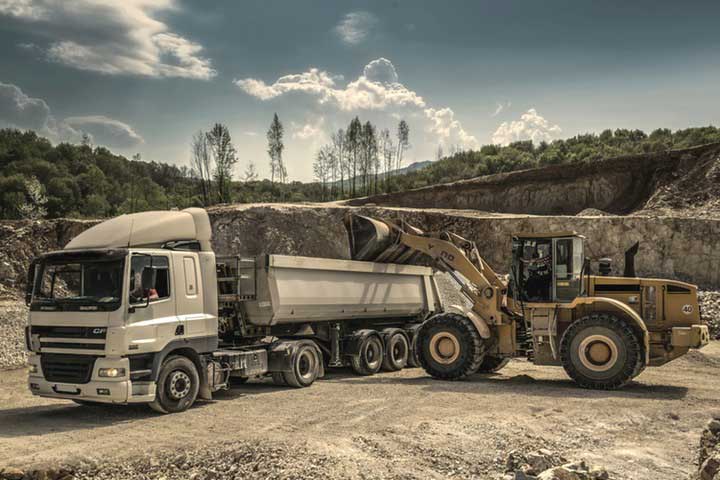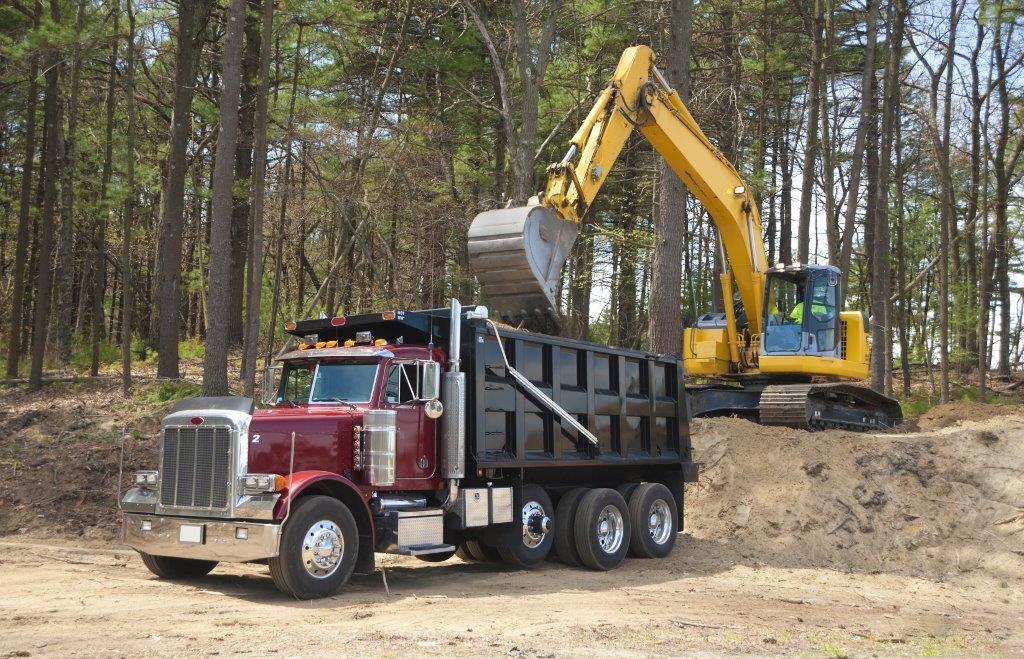 Dirt, often overlooked, stands as a foundational resource across diverse industries. Its role in landscaping, construction, and agriculture is undeniable. This blog seeks to illuminate the often mysterious realm of dirt pricing, answering a question that many might not have considered: How much does a truckload of dirt really cost?
Dirt, often overlooked, stands as a foundational resource across diverse industries. Its role in landscaping, construction, and agriculture is undeniable. This blog seeks to illuminate the often mysterious realm of dirt pricing, answering a question that many might not have considered: How much does a truckload of dirt really cost?
View Our Dirt Truckload Prices
Calculating Dirt Amounts
Determining dirt amounts needed is done differently from other common construction materials. Here is how to do so:
Dirt is measured in cubic feet and cubic yards. 1 cubic foot equals 12 inches x 12 inches x 12 inches, while 1 cubic yard equals 27 cubic feet. Need a visual? Picture an empty cube that has sides of 1 yard. Fill that empty cube up with dirt, and you have a perfectly-packaged cubic yard of dirt.
Measuring out the dirt amount beforehand can be done in two different ways:
This is how you would determine how much topsoil you would need for a flower bed that is 6” deep and 12’ long by 12’ wide:
- Convert the dimension in inches to feet (6” ÷ 12” = 0.5’)
- Multiply the three dimensions together to find the number of cubic feet (0.5’ x 12’ x 12 = 72 cubic feet)
- Divide the cubic feet by the number of cubic feet in a cubic yard (27) to find the number of cubic yards (72 ÷ 27 = 2.67 cu. yd.).
Therefore, you would need 2.67 cubic yards of dirt to fill the flower bed.
Here is a different calculation for the same amount. This involves converting all three dimensions to yards:
- Convert the dimension in inches to yards (6” ÷ 36” = 0.167 yards)
- Convert the dimensions in feet to yards (12’ ÷ 3 = 4 yards)
- Multiply the three dimensions together to find the number of cubic yards (0.167 x 4 x 4 = 2.67 cu. yd.)
If you would rather rely on a calculator, there are plenty available online that can spare you the time this all takes.
How Much is a Truckload?
 Dirt is most often hauled by dump truck, so it depends on the truck as far as the amount goes.
Dirt is most often hauled by dump truck, so it depends on the truck as far as the amount goes.
The average commercial dump truck can haul anywhere from 10 to 14 cubic yards of dirt. The actual price of the dirt can vary depending on the type.
Now, a truckload of dirt is a lot of dirt, so you would only need that much dirt for certain projects. Some of these projects can include leveling your yard around a property, construction of inground installations such as a swimming pool, creating new paths or building new driveways, sidewalks, and walking trails, or creating raised flower beds.
What Type of Dirt Do I Need?
Selecting the appropriate type of dirt is essential for the success of your landscaping or construction project, as different tasks demand specific soil characteristics. Understanding the distinctions between fill dirt and topsoil will guide you in making informed choices tailored to your project’s needs.
Fill Dirt
Situated approximately 12 inches below the soil surface, fill dirt is renowned for its sturdiness and lack of moisture. Often characterized by a dry and compacted nature, it includes rocks and sediment. Fill dirt is particularly valuable for tasks that require grading soil, such as leveling surfaces before construction.
Its hardness makes it an excellent choice for building foundations, creating ditches, or establishing a solid base for driveways and sidewalks. However, due to its lack of nutrients and rocky texture, fill dirt is not conducive to plant growth. It’s essential to recognize that its primary purpose is to provide structural support rather than to nourish vegetation.
Topsoil
Located above fill dirt, typically within the top 4 to 12 inches below the surface, topsoil is a fertile layer rich in nutrients and with minimal sediment. This type of dirt is a crucial component for projects focused on cultivating healthy vegetation.
Its nutrient-rich composition makes topsoil an ideal choice for flower beds, gardens, and any area where robust plant growth is desired. Unlike fill dirt, topsoil is not suitable for construction purposes due to its potential to trap gases and form air pockets. The emphasis here is on promoting plant health and supporting the growth of vibrant greenery.
When determining the type of dirt needed for your project, consider the specific requirements of the task at hand. If your goal is to establish a strong foundation or level surfaces, fill dirt is the go-to option.
On the other hand, if your project involves cultivating plant life and fostering a thriving landscape, topsoil is the more appropriate choice. Carefully assessing your project’s needs will ensure that you select the right type of dirt, optimizing the chances of success for your landscaping or construction endeavors.
Reach Out to Northern Virginia’s Top Dirt Professionals
Armed with insights into the factors influencing dirt pricing, individuals and businesses can connect with Dirt Connections now to get the perfect dirt for your project! Whether it’s topsoil for vibrant gardens or fill dirt for robust construction, we’ve got you covered.
Calculate your dirt needs with our expert guidance and ensure a successful transformation. Click here to request a quote and let’s bring your vision to life with the right dirt, delivered right to your doorstep!









































